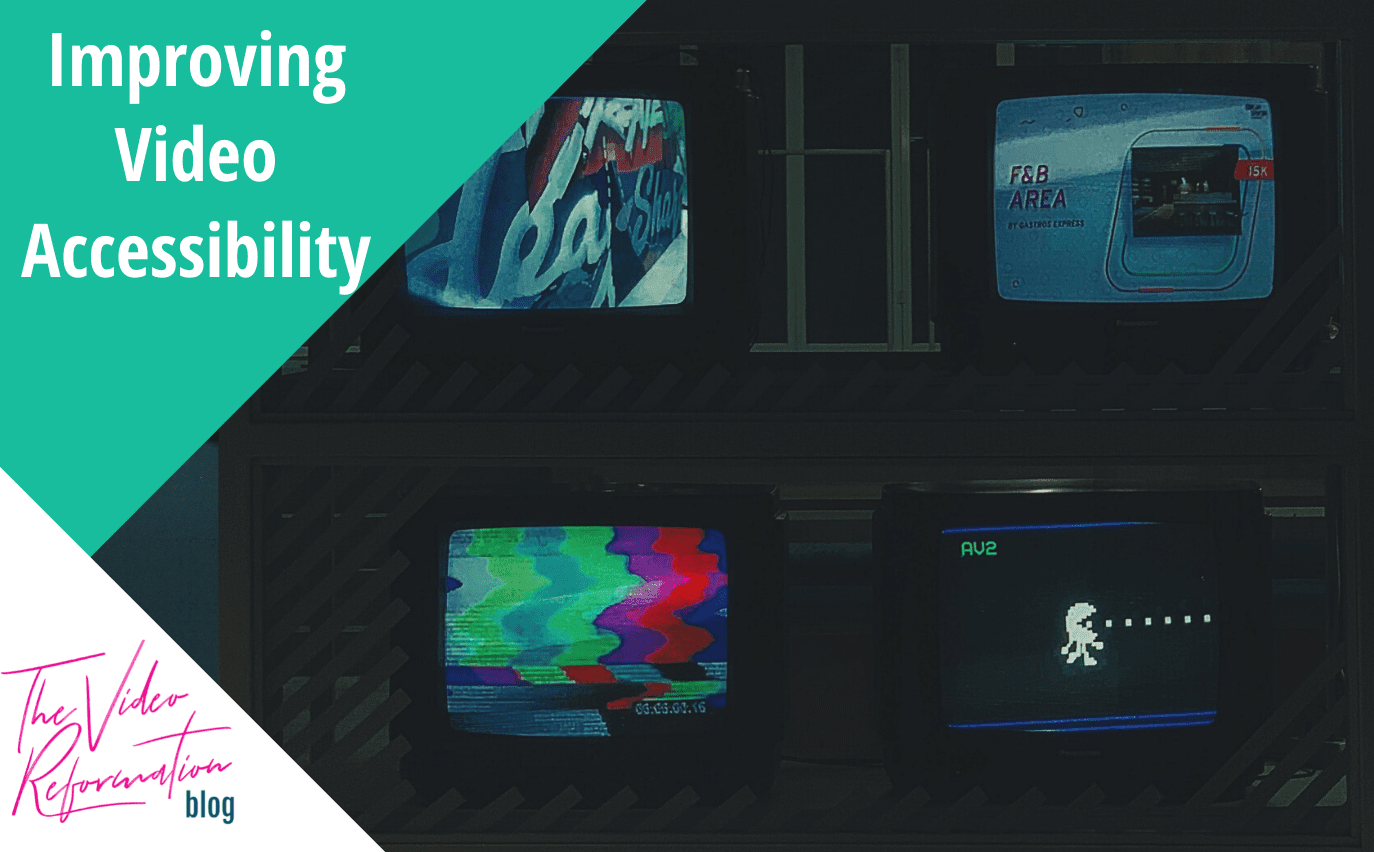They say you can lead a horse to water, but you can’t make it drink. To some, that’s a lesson about knowing what you can and cannot control. To content marketers, though, the lesson may actually be about accessibility.
Think about your distribution strategy: Ideally, you’ve designed it to push content where it can be found and viewed by your intended audience.
If the video isn’t accessible — if it lacks closed captioning or contains too many flashes, or uses a wonky video player that’s impossible to control — there are members of your audience who will never view your content. You’ve led them to the water but locked the water behind a gate.
The bottom line is that producing accessible content makes it easier for everyone to see your video. And it only takes a few simple additions to your production process to reap the benefits.
Why Should You Make Your Videos More Accessible?
We live in a wild world. Up can be down. Bad can mean cool. And a federal agency defined by its impenetrable bureaucracy can author the most straightforward argument for making your video content more accessible:
- You’ll gain viewers. 71% of internet users with a disability will leave a website that is not accessible.
- You’ll save money. Accessible internal video communications and content will make it easier to retain employees.
- You’ll drive innovation. An inclusive customer base and employee group will enable you to find more ways to produce accessible content and products.
The benefits don’t stop there. A study by Facebook found that including closed captioning can increase average video view times by 12%. Perhaps that’s because, as the same study found, 85% of Facebook videos are played without sound, and just over 40% of all videos are “basically meaningless” without sound.
If you’re looking to supercharge your SEO efforts, captions also give search engine crawlers more text to scan and another opportunity to push your content to the top of the results page.
How Do You Produce Accessible B2B Video Content?
Captions, as mentioned above, are the classic accessibility example. However, just because they are classic doesn’t mean they are standard.
Some video hosting sites and social media platforms may not offer closed captioning, where viewers can turn captions on or off depending on the viewer’s preference. If you use one of those platforms, you’ll have to upload the video with the text already engrained in the video, also known as open captions.
Digging a bit deeper, while people may use the terms subtitles and captions interchangeably, there is a subtle yet critical difference between the two. Subtitles only give viewers text of spoken dialogue or narration. Captions go beyond this baseline and offer brief text descriptions of all relevant audio, including background music and sound effects.
But accessibility doesn’t stop with captions. There is an array of potential ways to make your video library easier for everyone to view:
- Avoid rapid flashes: Generally, it’s best to avoid flashes whenever possible, but three or more flashes in a second are enough to trigger a seizure in some people.
- Consider color contrast carefully: Coloration that lacks contrast can make it difficult for some viewers to see what’s happening in the video.
- Include audio descriptions. Audio descriptions are a spoken narration of what’s visually occurring in the video. Offering audio descriptions may require producing an alternative video to ensure viewers can hear the dialogue, narration, and audio descriptions.
- Integrate visual descriptions into the script. Descriptive language can help decipher the undecipherable for those who have trouble seeing. E.G., “As this chart shows, efficiency improves by 25%” instead of “You can see on this chart how much efficiency improves.”
- Provide or upload transcripts. Transcripts allow viewers to read the scripted lines and descriptions of relevant visual elements and sound effects. In addition, some platforms offer interactive transcripts that highlight words as they are spoken.
- Record high-quality audio. We’ve previously gone over why audio is vital to your video, but making the audio crisp and clear also improves accessibility.
- Use an accessible video player. Unfortunately, not all video players are created equally, and some may lack an intuitive interface or make it difficult to pause or adjust the volume.
What is a Video Accessibility Checklist?
While there are relatively effortless ways to make your content easier to watch, others can require a bit of foresight. That is, you should consider accessibility in each of the seven phases of practicing video.
The best way to ensure that you’re producing a video as accessible as possible is with a checklist. You can create your own inventory or list, of course, but it may help to start with one made by the experts.
The World Wide Web Consortium is an international group that develops and sets the standards for the internet and the websites that inhabit it. W3C created guidelines that help make the internet, including video content, more accessible. Their checklist can be a resource as you think about your distribution strategy.
The Bureau of Internet Accessibility also provides industry-focused resources for companies looking to make it easy to consume. Their checklist is clear and concise and serves as an excellent baseline to customize your checklist.
Who Can Help You Produce an Accessible Video Content Library?
It can be initially overwhelming to think of how your content may be blocking some viewers from watching. However, Storyboard Media is here to help.
For instance, our Mr. Catalyst Video Content Audit can help analyze your current video catalog and identify areas where you can improve accessibility and boost SEO performance with minor tweaks like closed captioning or transcripts.
To make sure your videos are as easy as possible for everyone to watch, email us at hi@storyboardmedia.co.

